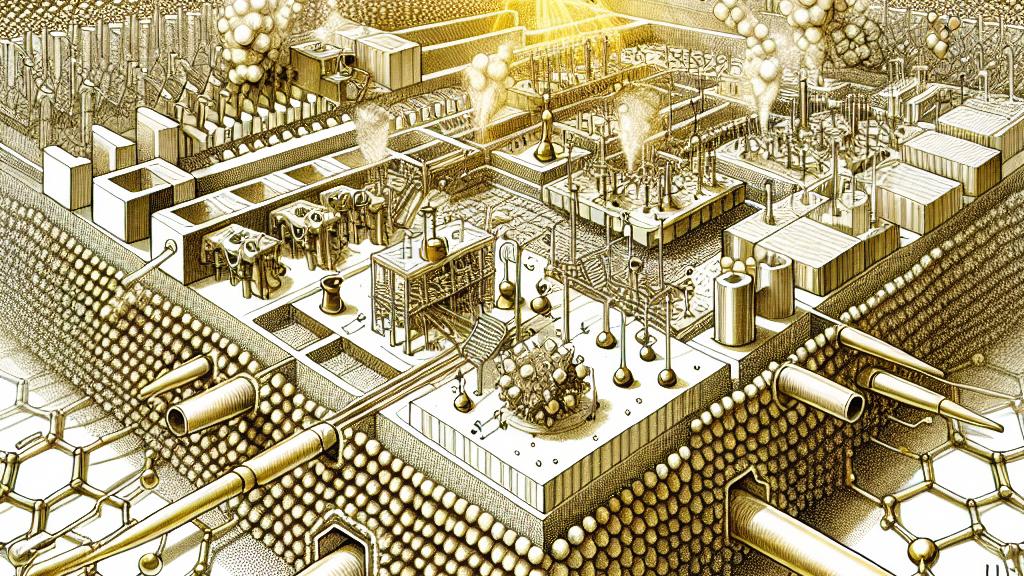Understanding Gas Interaction in Nanotunnels of Platinum-Gold Structures
Overview
- Explores how the dimensions of nanotunnels in platinum-gold structures influence gas adsorption.
- Examines the contrasting behaviors of hydrogen and carbon monoxide in these unique materials.
- Highlights promising applications in creating advanced gas sensors and efficient separation technologies.

The Crucial Role of Nanotunnel Dimensions
In Japan, researchers at Tokyo Metropolitan University have made significant strides in understanding the role of nanotunnels within platinum-gold structures. Their work has revealed that the size and shape of these microscopic voids are not just details; they are fundamental to how gases interact with metal surfaces. Imagine these nanotunnels as finely tuned corridors, where even the slightest variation can lead to different outcomes for gas movement and adsorption. By controlling these dimensions, we can potentially pave the way for the next generation of gas sensors and separation technologies that offer accuracy and efficiency like never before.
Fascinating Behaviors of Hydrogen and Carbon Monoxide
The distinctions between hydrogen and carbon monoxide in these nanotunnels are truly striking. Hydrogen, with its smaller and more flexible structure, travels rapidly through the tunnels, binding reversibly to platinum atoms. Picture it as a sprinter dashing down a track, able to change direction on a whim. On the other hand, carbon monoxide—a larger, more cumbersome molecule—faces challenges as it binds irreversibly, causing a dramatic transformation of the surrounding structure from a crown-motif to a chalice-motif. This metamorphosis is a perfect illustration of how molecular interactions can change based on structural context, emphasizing the importance of nanotunnel engineering.
Innovative Implications for Future Technologies
Looking ahead, the research opens a treasure chest of possibilities. By manipulating the dimensions of nanotunnels, we could develop groundbreaking technologies that enhance gas detection and separation. Imagine sensors that not only identify toxic gases at incredibly low levels but also transmit data instantly to inform safety protocols. Furthermore, engineered materials could optimize gas separation processes, leading to cleaner energy solutions and improved industrial applications. The ability to expertly design these nanotunnels represents not just a scientific triumph but a leap toward sustainability and environmental responsibility. Thus, mastering gas adsorption has the potential to unlock incredible advancements that could address global challenges.

Loading...